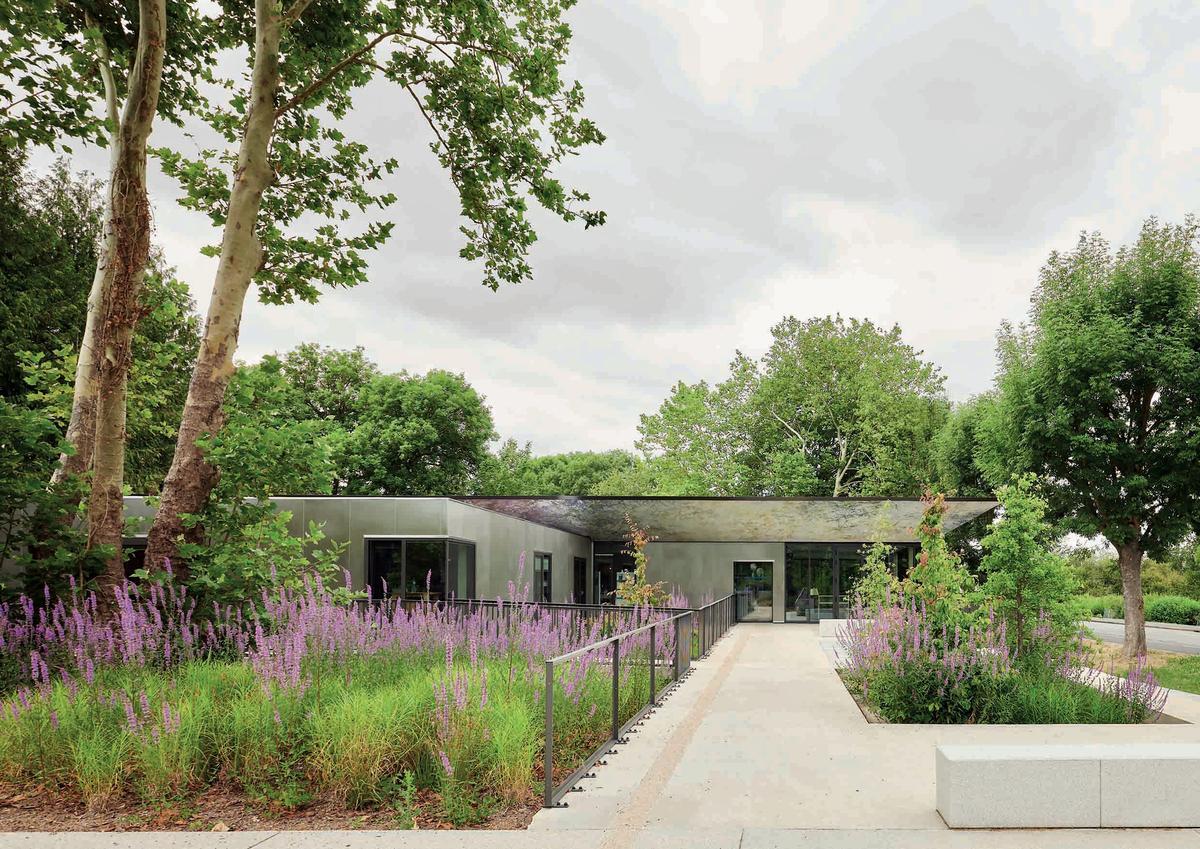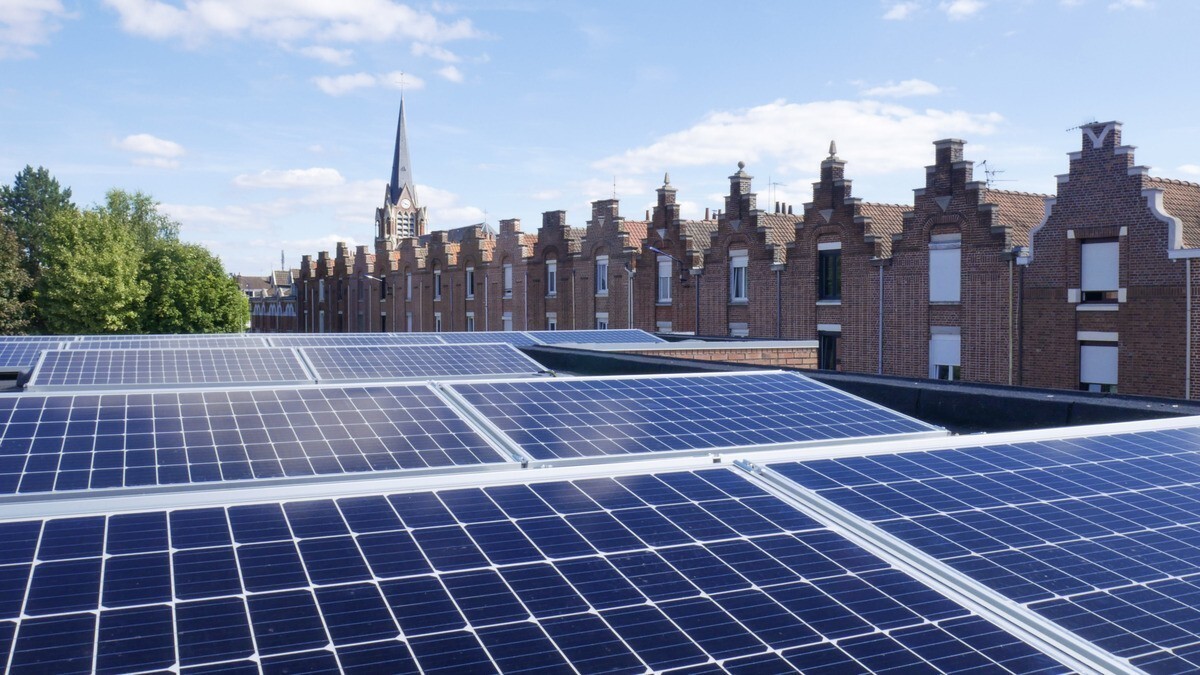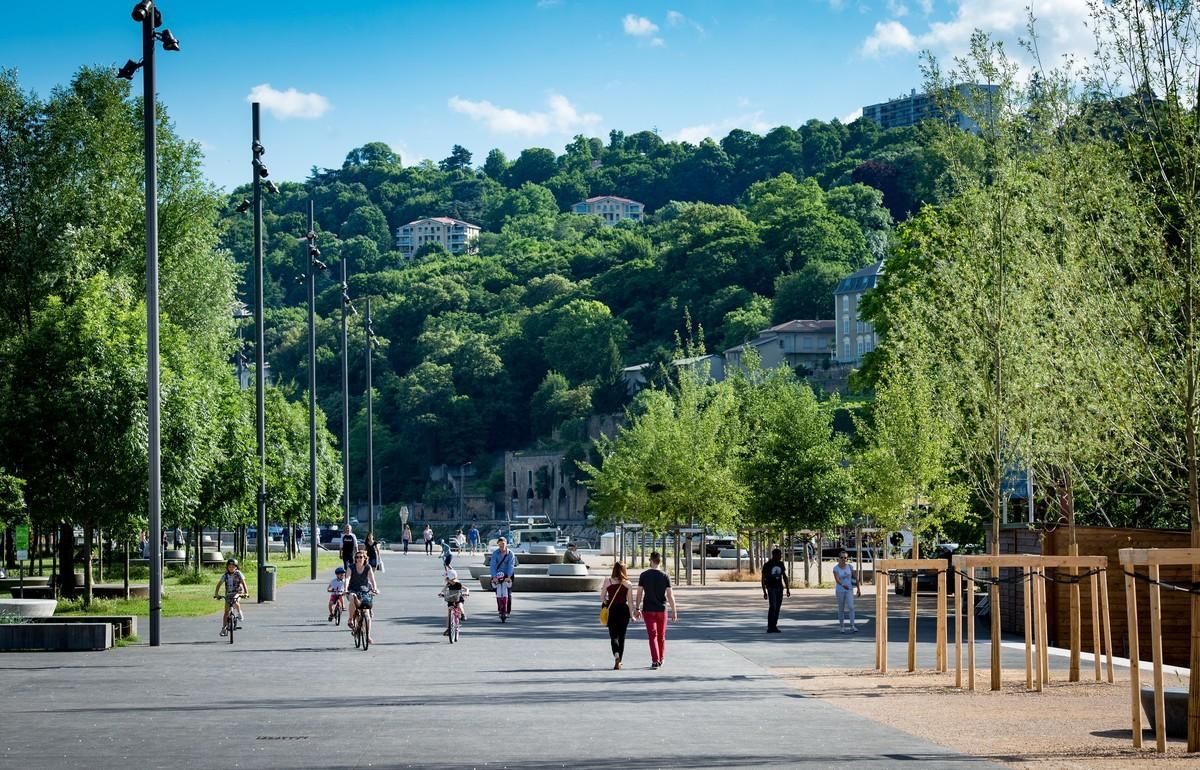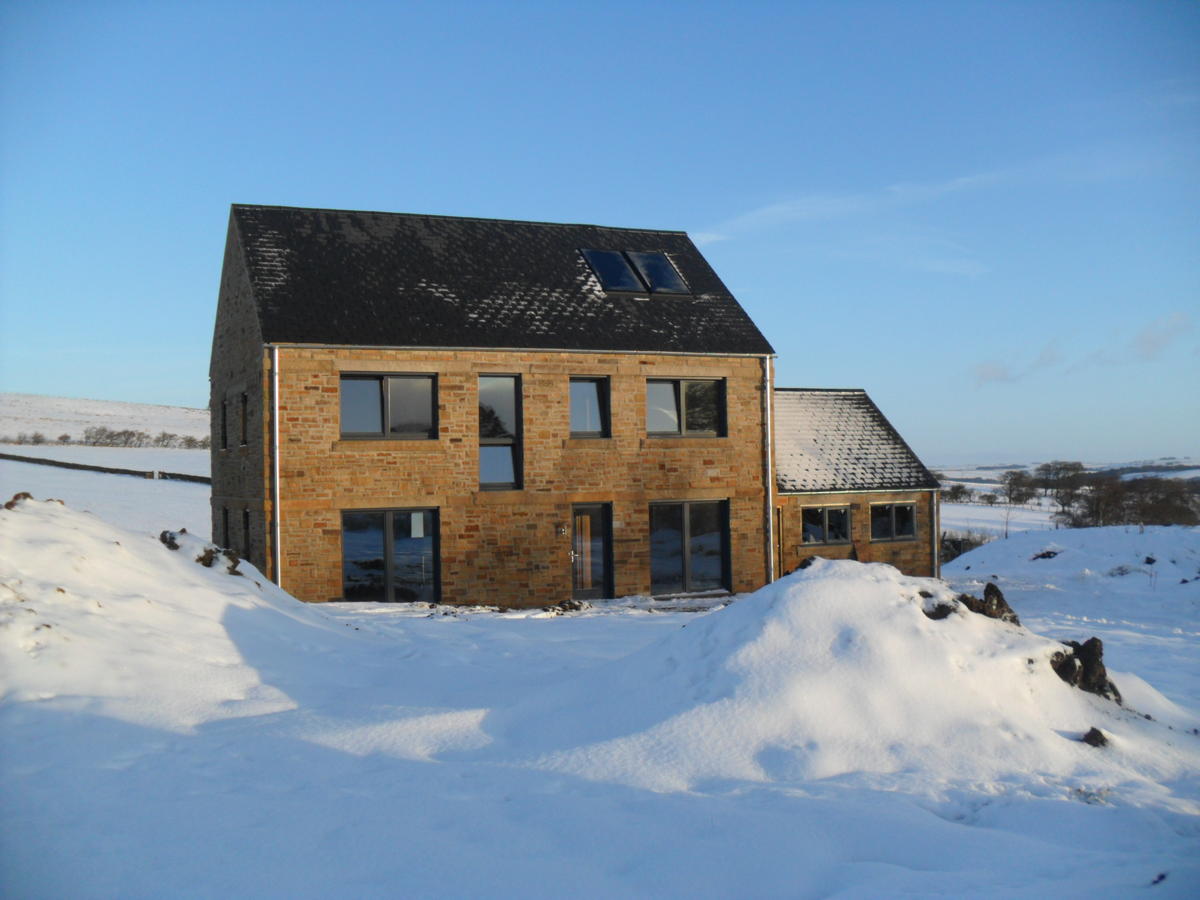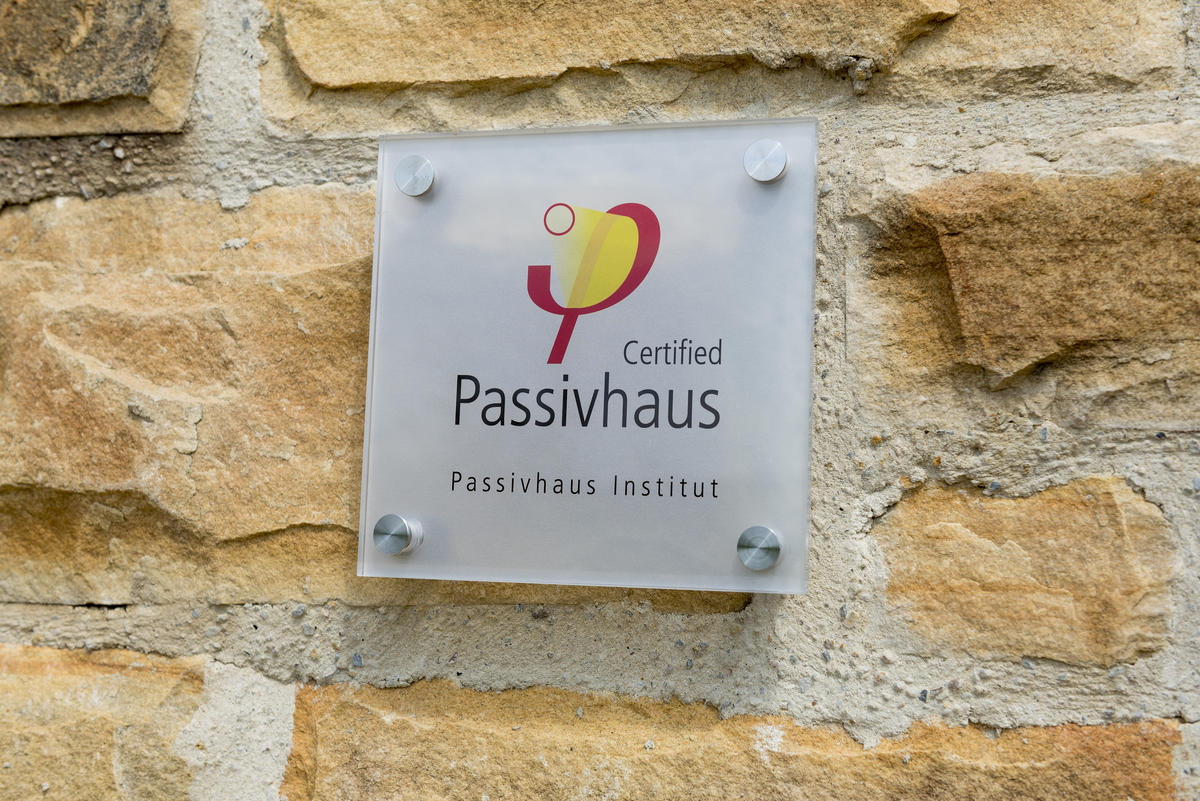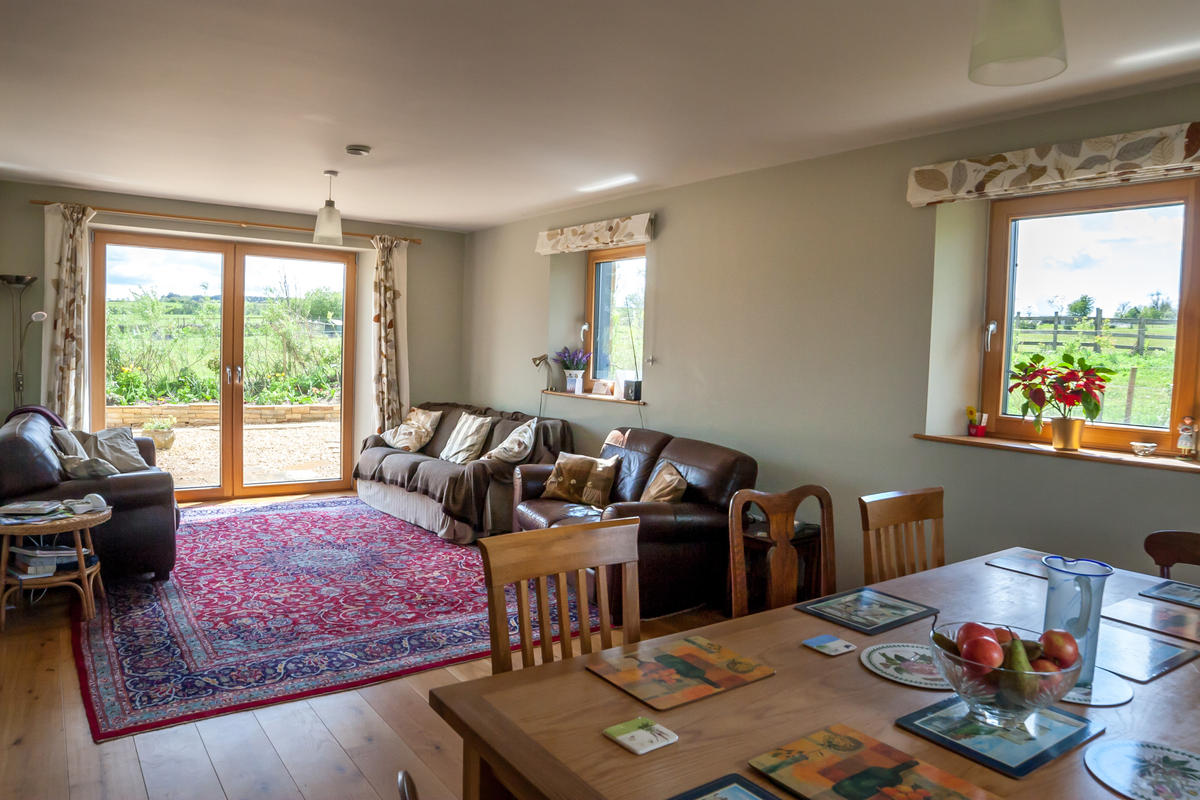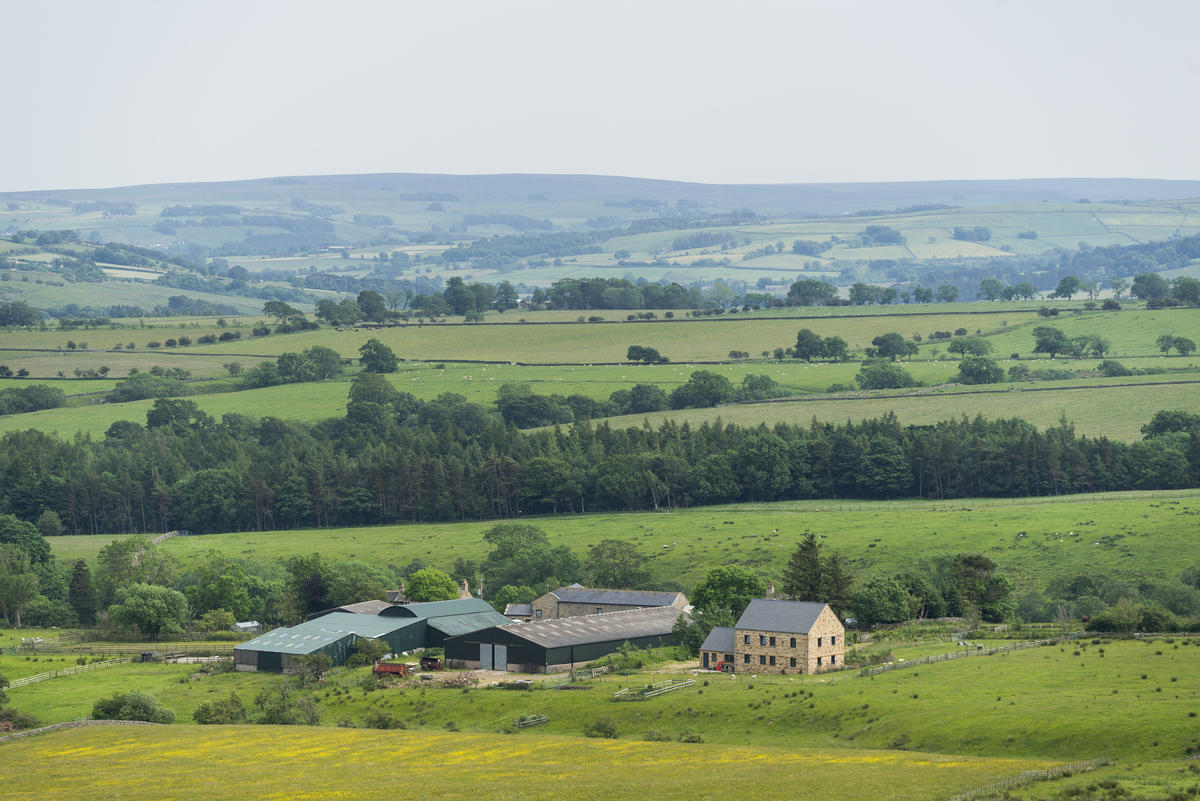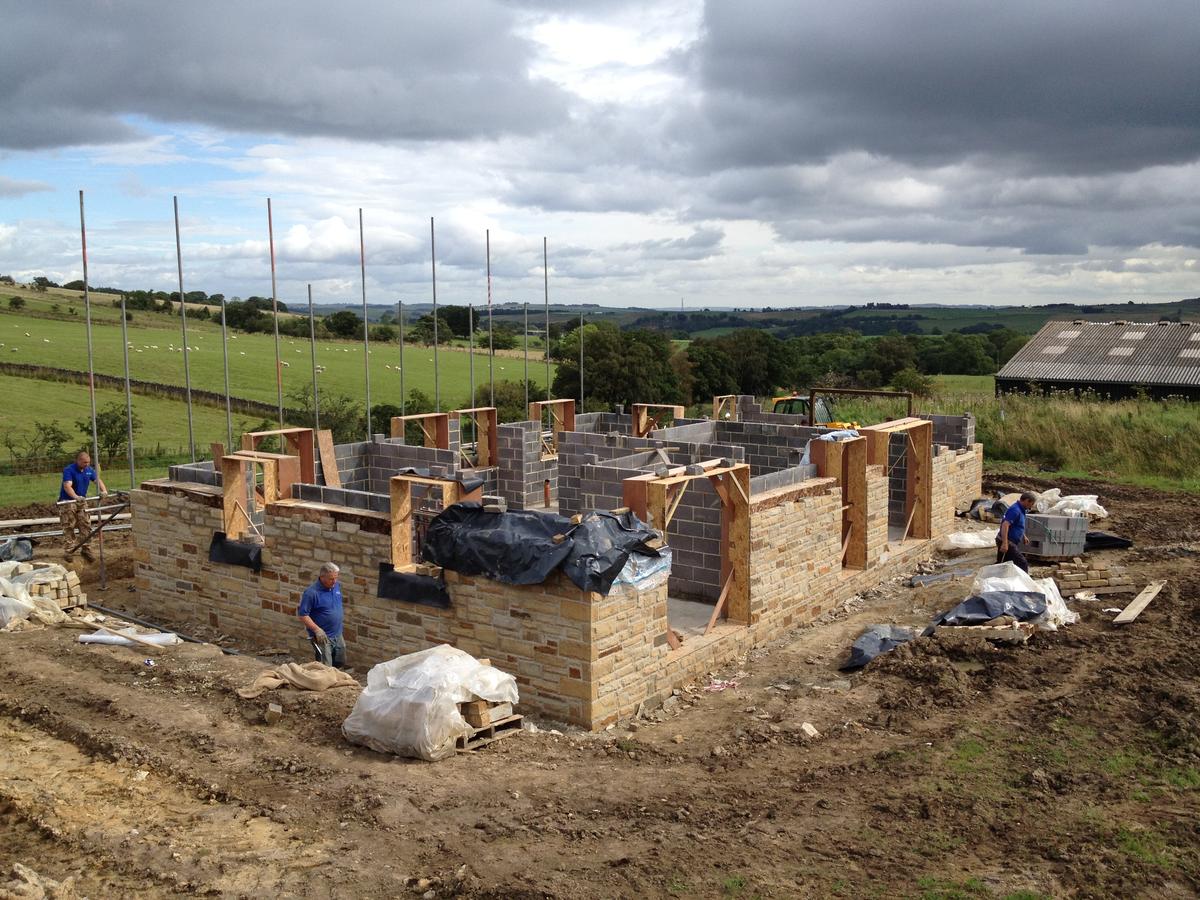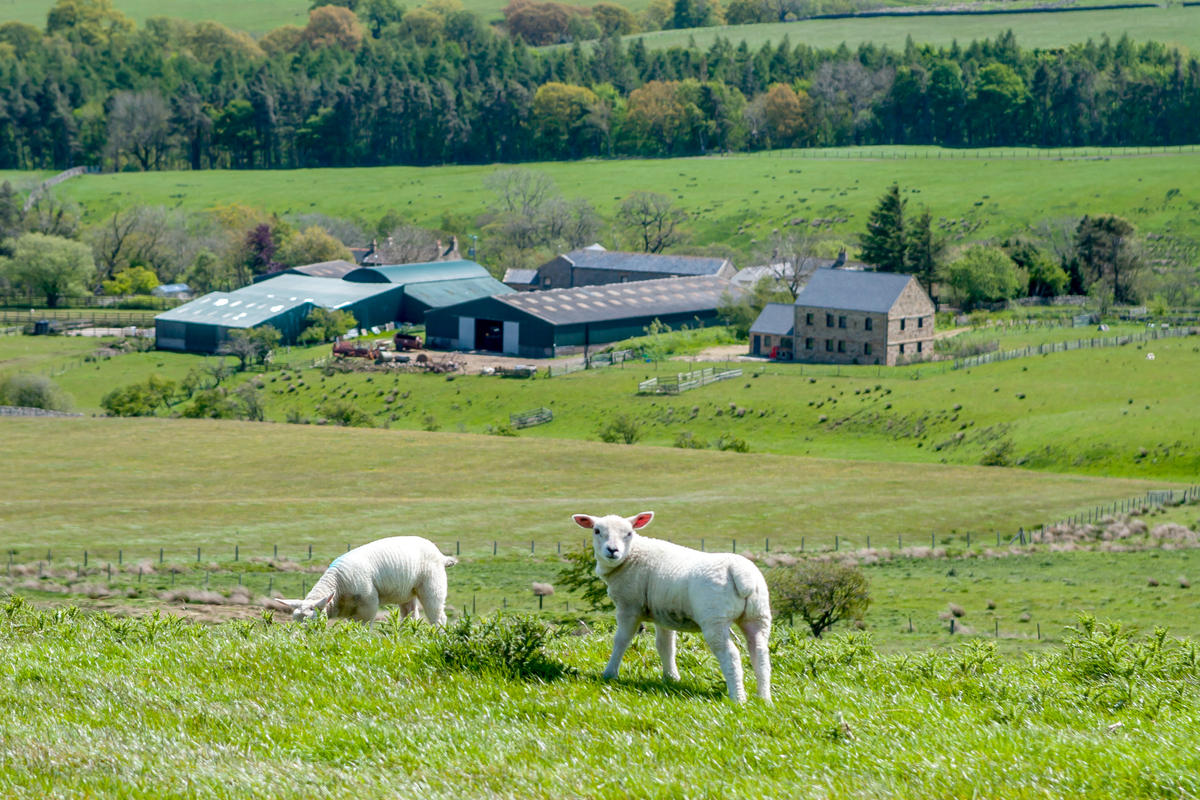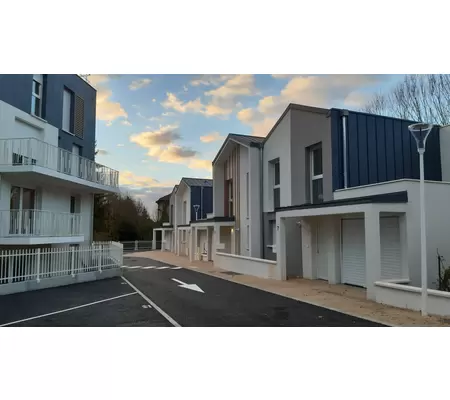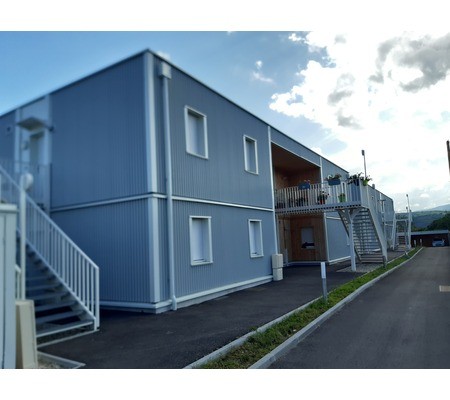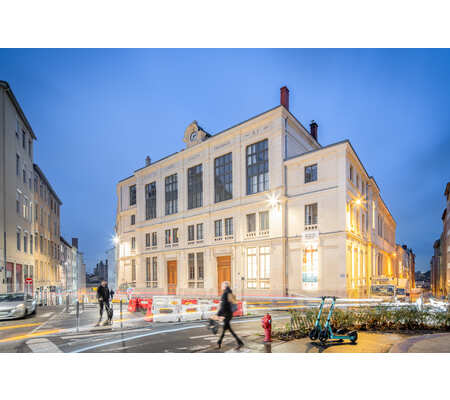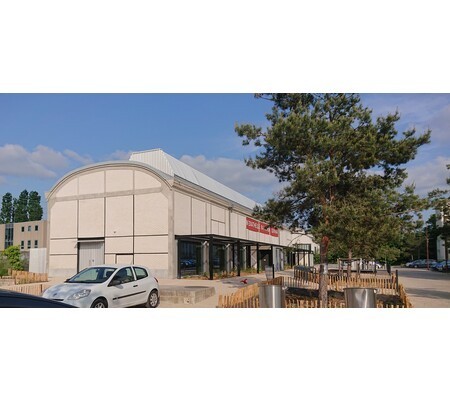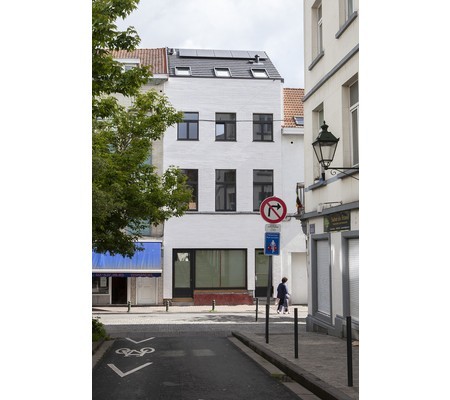Steel Farm
Last modified by the author on 25/04/2016 - 15:14
New Construction
- Building Type : Isolated or semi-detached house
- Construction Year : 2013
- Delivery year : 2013
- Address 1 - street : NE47 8JP WHITFIELD, United Kingdom
- Climate zone : [Cfb] Marine Mild Winter, warm summer, no dry season.
- Net Floor Area : 151 m2
- Construction/refurbishment cost : 1 567 €
- Number of Dwelling : 1 Dwelling
- Cost/m2 : 10.38 €/m2
-
Primary energy need
85 kWhpe/m2.year
(Calculation method : Other )
Steel Farm is located near Hexham in the North Pennine Area of Outstanding Natural Beauty (ANOB). Built using traditional construction technology it is the first Certified Passivhaus in Northumberland.
As organic farmers they owned a plot of land where they dreamt of building a comfortable, low energy home that could accommodate them in their old age and minimise their impact upon the environment. They longed to build their own sustainable low energy home so that family could come and stay. (In the winter of 2011 Trevor and Judith Gospel were renting a small, gloomy bothy. That bitterly cold winter they found that the inside of their fridge was warmer than the living room.)
The remote rural location, limited access to utility mains, and onerous planning restrictions incurred significant costs and strongly influenced design. A number of conditions imposed by the local planning department increased costs and nearly prevented the Gospel’s from building their dream home. The house features a solar thermal system for domestic hot water and a reed bed system for the treatment of foul waste water. AECB Water Standards informed the design also.
Delicate negotiations were undertaken to demonstrate the value that the project had to offer the local and regional economy, and the environment. They also saw the removal of a requirement to provide tabling and two chimneys. Ultimately all of these criteria were fulfilled without compromising the client’s desire to achieve the Passivhaus standards of performance.
Planning permission was received in September 2011. Construction commenced in June 2012 and was completed in February 2013.
Trevor and Judith now live in their spacious new, home. The walls are washed with natural daylight and the windows frame views of the rolling hills (allowing surveillance of the livestock). The lights are rarely used.
A three part documentary series about the project is available at www.PassivhausSecrets.co.uk
See more details about this project
http://www.PassivhausSecrets.co.ukStakeholders
Designer
LEAP
Mark Siddall
http://www.leap4.itArchitect and Passivhaus Designer
Type of market
Realization
If you had to do it again?
Definitely train the site trades before starting on site. We did and risk was reduced significantly.
Building users opinion
Trevor Gospel "The construction of our new home has been a real adventure; challenging at times but, all in all, well worth the wait. Both Mark and Joe have met and exceeded our expectations. We had a limited budget and stuck to it. I don't think that we could have been in safer hands."
Judith Gospel “In our old accommodation, a winter or two ago, 2011 I think, we measured the temperature of the fridge and the living room. At one point it was warmer in the fridge! More than the savings in the energy bills and the reduced environmental impact, we are enjoying the comfort of our new home."
Energy consumption
- 85,00 kWhpe/m2.year
- 220,00 kWhpe/m2.year
Envelope performance
- 0,10 W.m-2.K-1
- 3,20
- 0,32
More information
The precise amount of electrical energy used by the house can not be determined because the electric meter is used for the whole farm.
Real final energy consumption
24,00 kWhfe/m2.year
3 649,00 kWhfe/m2.year
2 014
Systems
- Condensing gas boiler
- Condensing gas boiler
- Solar Thermal
- No cooling system
- Double flow heat exchanger
- Solar Thermal
- 40,00 %
Smart Building
Urban environment
- 1 250,00 m2
- 15,00 %
Product
Paul Novus MVHR (supplied by Green Building Store)

PAUL
Green Building Store
http://greenbuildingstore.co.uk/Génie climatique, électricité / Ventilation, rafraîchissement
mechanical ventilation with heat recovery
Passivhaus Certified
Construction and exploitation costs
- 307 350 €
Energy bill
- 367,00 €
Water management
Indoor Air quality
Comfort
GHG emissions
- 15,70 KgCO2/m2/year
- 100,00 year(s)
Reasons for participating in the competition(s)
About the Passivhaus Standard:The term “PassivHaus” refers to a specific building construction standard with excellent comfort conditions during summer and winter. Such buildings reduce space heating by 90% and total energy consumption by 75-80% compared to UK Building Regulations and achieve a comparable reduction in carbon emissions. The Passivhaus Standard was developed in the early 1990’s by Professor Wolfgang Feist and Professor Bo Adamson and then launched in 1996.
The Passivhaus Standard, the worlds leading quality assurance standard for low energy building, is over 20 years old and there are now reported to be more than 50,000 Passivhaus buildings globally – including houses, apartments, schools, offices, sports halls and gymnasiums, sheltered accommodation and care homes, hospitals and medical centres.
The exemplary performance of Passivhaus Standard has been documented extensively through ongoing scientific research. In parallel research has revealed that there is a significant gap between the theoretical performance of sustainable low energy dwellings and the actual delivered performance. This often means carbon emissions savings are not being delivered in practice. Recent papers, including a paper prepared by the architet of Steel Farm (http://www.mdpi.com/2071-1050/8/1/97/pdf), demonstrate that houses build to the Passivhaus Standard are capable of closing the performance gap.
Even more about information about the performance gap and how it may be closed can be found at www.BuildingPerformanceEvaluation.co.uk
Building candidate in the category

Energy & Temperate Climates


